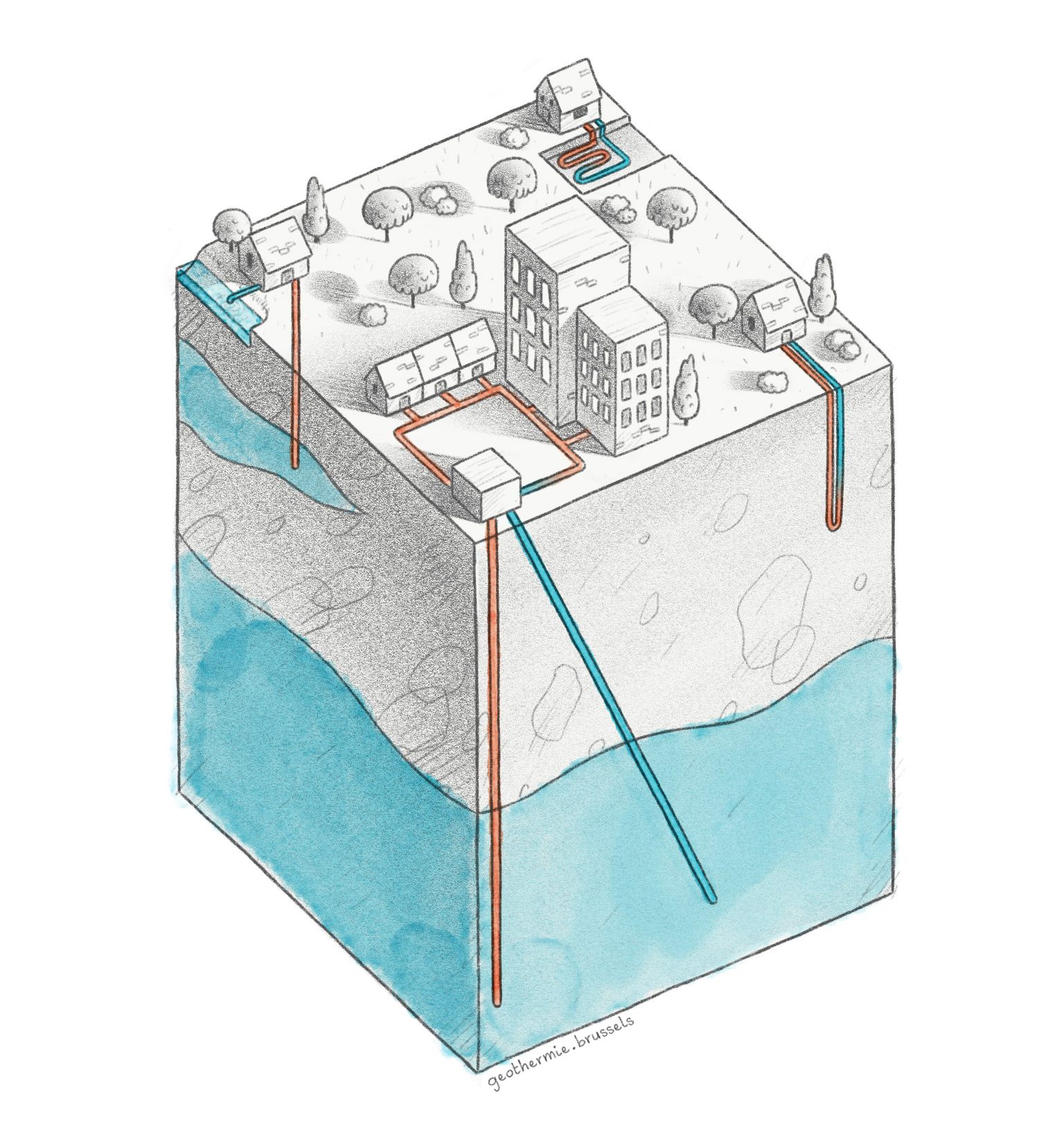What is geothermics?
The term ‘geothermics’ refers to a series of techniques used to extract heat from the Earth for heating or energy production. By extension, it also includes systems designed to provide cooling by dissipating heat into the Earth.
Geothermics relies on the Earth as a source of heat at a global scale.
There are different types of geothermal systems, which are classified according to either the depth or temperature of the heat reservoir. This website identifies the following categories:
- Category I: Very shallow geothermics: 5 metres deep or less
- Category II: Shallow geothermics: 50 to 300 metres deep
- Category III: Deep geothermics: more than 1,000 metres deep
The first two categories include geothermal systems that make indirect use of the Earth's heat. At these shallower depths, the thermal output is not high enough to directly heat a building or generate energy. This means a heat pump must be used on the surface, in order to provide the building with the energy required for heating or cooling. The 3rd category of geothermal system, on the other hand, can make direct use of the Earth's heat in order to provide district heating or generate energy using a turbine.
The depth of the system depends on the thermal output required, on the area available at the surface, and on the Earth's geothermal characteristics in the area. The depths given above for each category may therefore vary widely, depending on the system.
The following table presents an overview of the various categories and their characteristics in terms of extraction depth, temperature, and uses.

| Category | Depth | Temperature | Enthalpy | Types | Soil/rock | Water present | Uses |
|---|---|---|---|---|---|---|---|
| Category I | 1 – 5 metres | -10 °C – 25 °C | Very low energy | Horizontal loop fields and heat baskets | Soft soil | Water not recommended | Climate control (heating and/or cooling) of buildings – domestic hot water |
| Category II – Closed systems | 10 – 30 metres | 0°C – 25 °C | Very low energy | Energy piles and other geostructures | Soft soil | Water not essential | Climate control (heating and/or cooling) of buildings – domestic hot water |
| Category II – Closed systems | 50 – 30 metres | 0°C – 25 °C | Very low energy | Vertical loop fields | Soft soil or porous rock | Water not essential | Climate control (heating and/or cooling) of buildings – domestic hot water |
| Category II – Open systems | 10 – 100 metres | 0°C – 25 °C | Very low energy | Geothermal wells (pumping wells) | Saturated permeable subsoil (aquifer) | Aquifer | Climate control (heating and/or cooling) of buildings – domestic hot water |
| Category III | 1,000 – 2,000 metres | 50 – 100 °C | Low energy | Geothermal wells (pumping wells) | Porous or fractured rock | Hot water | High-temperature heating |
| Category III | 4,000 – 5,000 metres | 100 – 200 °C | Intermediate energy | Geothermal wells (pumping wells) | Fractured rock | Hot water or steam | Industrial applications or energy production |
| Category III | 1,500 – 3,000 metres | 200+ °C | High energy | Pumping wells / steam wells | Fractured rock | Steam | Energy production |




